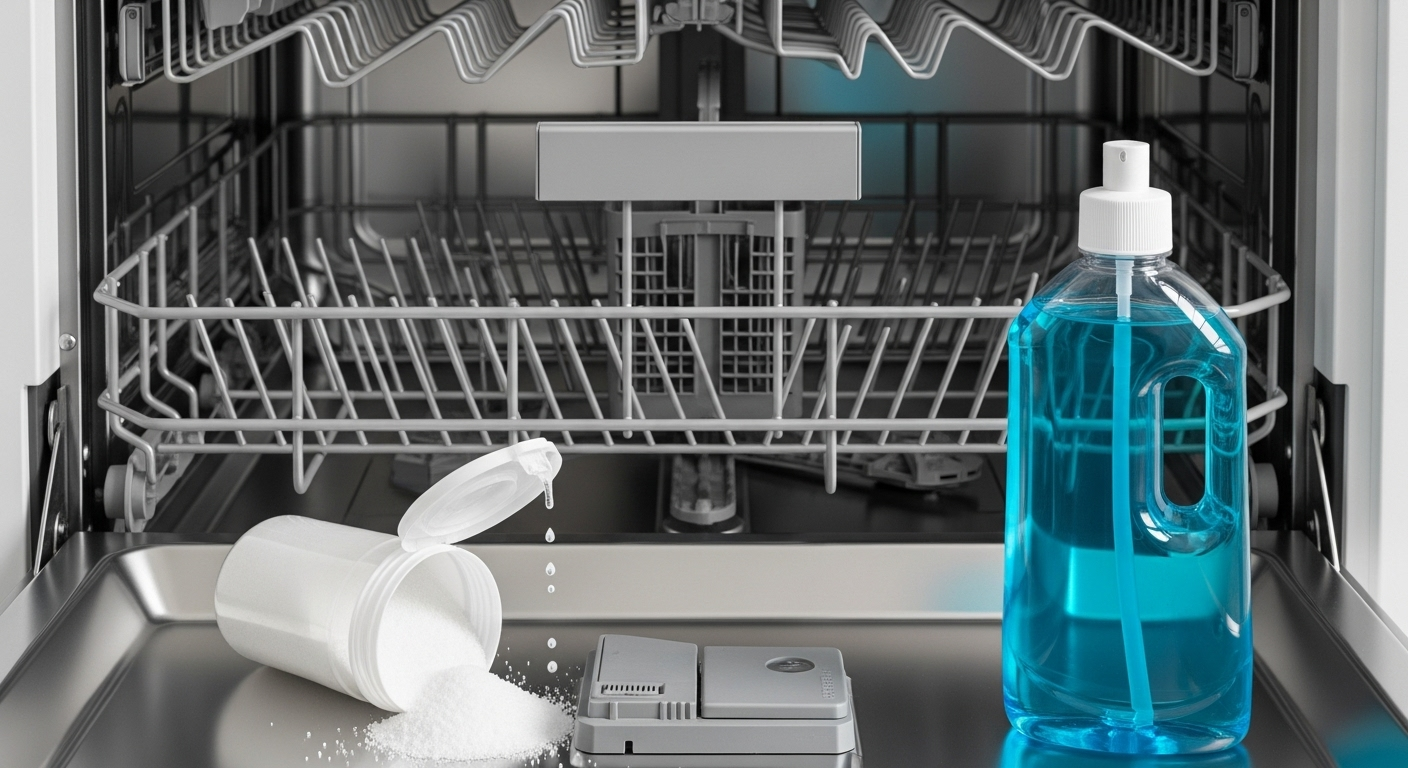Understanding Your Local Water Hardness
Before we dive into how often to refill these products, you need to understand that water hardness varies dramatically across the UK. Around 60% of British homes deal with hard or very hard water, particularly in the South and East of England where the water passes through limestone and chalk deposits.
The harder your water, the more frequently you'll need to refill your dishwasher salt. It's that simple. If you live in areas like Bath, Milton Keynes, or Swindon—which have some of the hardest water in the UK—you'll be topping up salt monthly. But if you're lucky enough to live in Scotland or Cornwall with naturally soft water, you might barely use any salt at all.
How Often to Refill Dishwasher Salt
The General Rule
Every 1-2 months is the standard recommendation for most UK households, but this can vary significantly based on several factors:
- Water hardness level: Hard water areas need monthly refills, whilst soft water areas may need top-ups every 3-4 months or even less
- Usage frequency: Running your dishwasher daily versus twice a week makes a considerable difference
- Salt reservoir size: Larger dishwashers have bigger salt compartments that last longer
- Very Hard Water Areas (300+ mg/l): Monthly refills
- Hard Water Areas (200-300 mg/l): Every 6-8 weeks
- Moderate Water (100-200 mg/l): Every 2-3 months
- Soft Water Areas (Below 100 mg/l): Rarely needed, perhaps twice yearly
Let Your Dishwasher Tell You
Most modern dishwashers make this guesswork unnecessary. Look for:
- Salt refill indicator light on the control panel
- Salt level indicator (a small float mechanism in the salt compartment)
- Visible salt level below the minimum mark when you check manually
Signs Your Dishwasher Needs Salt
If your salt indicator isn't working or you can't see it clearly, watch for these telltale signs:
- Cloudy, streaky glassware that looks worse after washing than before
- White chalky residue on dishes, particularly noticeable on dark plates
- Limescale buildup inside the dishwasher, especially around the heating element
- Poor cleaning performance despite using quality detergent
How Often to Refill Rinse Aid
Standard Refill Schedule
Every 30 dishwasher cycles is the general guideline, which translates to:
- Heavy users (daily washing): Every 4-6 weeks
- Moderate users (4-5 times per week): Every 6-8 weeks
- Light users (2-3 times per week): Every 2-3 months
When to Check and Refill
Unlike salt, which you can often forget about for weeks, rinse aid requires more regular attention:
- Check the indicator window next to the rinse aid compartment—when it appears empty or nearly empty, it's time to refill
- Watch for the rinse aid warning light on your dishwasher's display
- Monitor drying performance—if dishes are coming out with water droplets or taking ages to air dry, you likely need more rinse aid
Signs You Need Rinse Aid
- Water spots on glassware and cutlery
- Streaky finishes on dishes and the dishwasher interior
- Poor drying performance—everything comes out dripping wet
- Cloudy film on glasses that doesn't come off with normal washing
The Refilling Process: Getting It Right
Adding Dishwasher Salt
- Locate the salt compartment at the bottom of your dishwasher (usually has a screw-on cap marked with an 'S' or salt symbol)
- Use a funnel to avoid spillage—salt crystals can scratch glassware if left in the tub
- Fill completely until no more salt will fit
- Replace the cap tightly to prevent leaks
- Run a rinse cycle immediately to wash away any spilled salt granules
Adding Rinse Aid
- Open the rinse aid compartment (usually next to the detergent dispenser on the door)
- Pour slowly until you reach the 'MAX' line—overfilling can cause excessive foaming
- Wipe away any spills immediately to prevent foaming during the next wash
- Close the compartment firmly until you hear it click
Adjusting for Your Household
High-Usage Households
If you're running your dishwasher multiple times daily, you'll need to check levels more frequently:
- Salt: Every 3-4 weeks in hard water areas
- Rinse aid: Every 3-4 weeks regardless of water hardness
- Consider buying larger quantities to avoid frequent shopping trips
Energy-Conscious Users
Modern eco-friendly dishwashers use less water and lower temperatures, making salt and rinse aid even more critical for good results:
- Don't skip rinse aid thinking you'll save money—poor drying leads to rewashing
- Proper salt usage actually improves energy efficiency by preventing limescale buildup on heating elements
Hard Water Area Residents
If you live in the limestone belt of England, you're fighting an uphill battle against mineral deposits:
- Set your dishwasher's water hardness setting correctly (check your manual)
- Consider monthly maintenance routines to stay ahead of limescale
- Use both products religiously—skipping them will cost you more in the long run through poor performance and potential repairs
Maximising Performance: Pro Tips
Timing Your Refills
- Check levels when unloading clean dishes—it becomes part of your routine
- Refill before starting a big load rather than discovering empty reservoirs mid-cycle
- Keep spare supplies so you're never caught short
Storage and Safety
- Store salt in a dry place to prevent clumping
- Keep rinse aid away from children—it's more concentrated than you might think
- Buy quality products from recognised brands for consistent results
The investment in these products pays for itself through better cleaning results, improved energy efficiency, and longer dishwasher life. And let's be honest—there's something rather satisfying about opening the dishwasher to find everything sparkling clean and properly dry, rather than resembling the contents of a car boot sale after a downpour.
